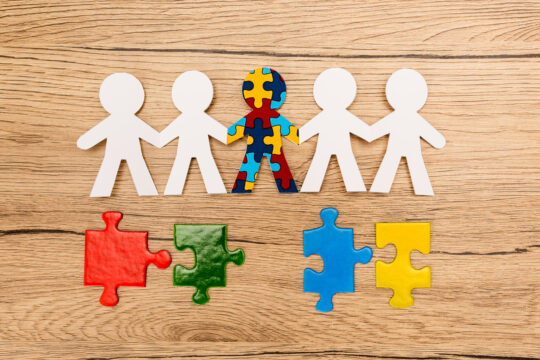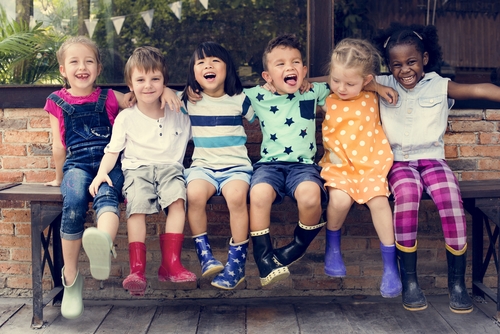Throughout my twenty years as a speech and language specialist working in early years settings across the UK, I’ve observed remarkable transformations in how we understand and support early language development. While the fundamentals of language acquisition remain constant, our growing understanding of how children learn to communicate has led to more nuanced and effective approaches in supporting this crucial area of development.
The Foundations of Communication
Before we delve into advanced strategies, it’s essential to understand that language development begins long before a child speaks their first word. In my work with nurseries across Greater Manchester, I’ve noticed that practitioners who truly grasp this concept achieve the most significant outcomes with their children. From the moment babies enter our settings, they’re absorbing the rhythms of speech, the patterns of conversation, and the subtle nuances of non-verbal communication.
Consider the case of little Emma, a baby I worked with in a Birmingham nursery. At just four months old, she was already participating in ‘conversations’ through facial expressions, vocal sounds, and body movements. Her key person understood that these early interactions were laying the groundwork for future language development and responded accordingly, treating each coo and gurgle as meaningful communication.
Understanding Language Development in Context
The journey of language development is fascinatingly complex and deeply individual. Through my observations in various settings, I’ve noticed that children often develop language skills in ways that reflect their unique environments and experiences. A child growing up in a bustling London nursery might develop different early communication strategies compared to one in a smaller, quieter setting.
Take Mohammed, a three-year-old I worked with in Leeds. While his verbal language was developing more slowly than some of his peers, his gestural communication was sophisticated and effective. His practitioners recognised this strength and built upon it, gradually incorporating more verbal language alongside his preferred communication method. This respectful approach led to a natural expansion of his communication repertoire.
Supporting English as an Additional Language
In our wonderfully diverse early years settings, supporting children who speak English as an additional language requires particular consideration. Through my work in multicultural areas of Birmingham and London, I’ve seen how crucial it is to value and incorporate children’s home languages while supporting their English language development.
I remember working with a nursery in East London where over fifteen languages were spoken among the children. The setting created a rich language environment by incorporating key words in different languages throughout the space, using visual supports effectively, and ensuring that all children’s home languages were celebrated. This approach not only supported EAL children’s confidence but enriched the linguistic experience of all children in the setting.
The Power of Environmental Language
The physical environment plays a crucial role in language development that often goes underappreciated. Through my consultancy work, I’ve helped settings transform their spaces into language-rich environments that naturally encourage communication. This goes far beyond labelling objects or creating book corners.
In a Nottingham nursery, we reimagined their environment to create communication-friendly spaces throughout. Cosy conversation corners were designed with soft furnishings and interesting objects to spark discussion. Open-ended resources were carefully selected to encourage descriptive language and narrative development. The results were remarkable – children naturally engaged in more complex conversations and demonstrated increased vocabulary use in their play.
Supporting Language Through Play
Play remains the most powerful vehicle for language development in the early years. Through my observations, I’ve seen how different types of play support various aspects of language development. Imaginative play, for instance, provides opportunities for children to use language in increasingly sophisticated ways.
I observed this beautifully in a Cardiff setting where practitioners had created an immersive role-play area based on children’s interests in space exploration. The language that emerged was rich and complex – children used technical vocabulary they had learned about space, created elaborate narratives about their imaginary journeys, and engaged in sophisticated problem-solving discussions with their peers.
The Role of Music and Movement
Music and movement play a vital role in language development that extends far beyond traditional nursery rhymes. Through my research and practical experience, I’ve seen how rhythm, melody, and movement support children’s understanding of language patterns and enhance their ability to process and produce speech.
In a Newcastle setting, we introduced a daily music and movement session that incorporated elements of storytelling. Children who were initially reluctant to engage in verbal communication began to join in with repeated phrases and actions, gradually building their confidence in using language in other contexts.
Supporting Children with Additional Needs
Every child’s journey to language development is unique, and some require additional support along the way. Through my work with children with various additional needs, I’ve learned that the key is to identify and build upon their individual strengths while providing appropriate support for their challenges.
Working with a young child with autism in a Bristol setting, we discovered that while he struggled with traditional verbal communication, he had a remarkable ability to remember and respond to song. We used this strength as a bridge to develop his broader communication skills, gradually introducing new words and concepts through musical activities.
Involving Families
Family involvement is crucial in supporting language development, but it requires a sensitive and supportive approach. Through my work with families across the UK, I’ve found that the most effective partnerships are built on mutual respect and understanding.
In a Liverpool setting, we developed a successful approach to family engagement that went beyond simply sending home activity ideas. We created regular opportunities for families to join in with storytelling sessions, shared strategies they could naturally incorporate into daily routines, and provided resources that supported their child’s specific interests and needs.
Looking Forward
As our understanding of early language development continues to evolve, we must remain responsive to new research while holding onto what we know works. The key is to maintain a balanced approach that values both traditional and innovative methods of supporting children’s communication development.


Comments are closed.